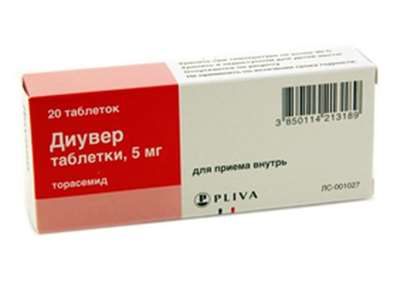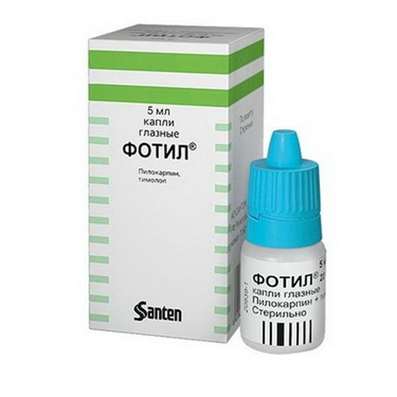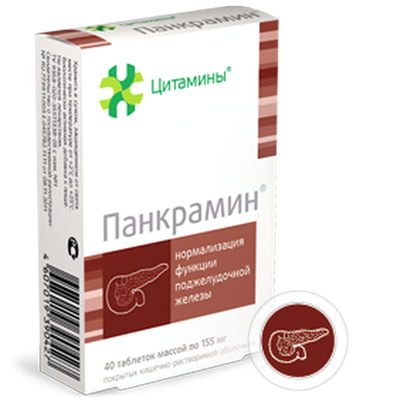Instruction for use: Argett Duo
I want this, give me price
Active substance Diclofenac
ATX Code M01AB05 Diclofenac
Pharmacological group
NSAIDs - Acetic acid derivatives and related compounds in combinations
Composition
One capsule contains:
diclofenac pellets intestinal soluble 78.50 mg, equivalent to 25 mg of diclofenac sodium;
diclofenac pellets with a sustained release of 130.55 mg, equivalent to 50 mg of diclofenac sodium.
Ingredients - Diclofenac intestinal soluble pellets:
active substance:
diclofenac sodium 25 mg
Excipients:
microcrystalline cellulose 31.87 mg
povidone-K25 5 mg
silicon dioxide colloidal anhydrous 0.63 mg
shell pellets intestine soluble:
methacrylic acid and ethyl acrylate copolymer [1: 1]
(Eudragit L 100-55) 10 mg
propylene glycol 1 mg
talc 5 mg
Composition - Diclofenac pellets with prolonged release:
active substance:
diclofenac sodium 50 mg
Excipients:
cellulose microcrystalline 63.75 mg
povidone-K25 10 mg
Silica dioxide colloidal anhydrous 1.25 mg
a pellet with prolonged release:
methyl methacrylate, trimethylammonioethyl methacrylate
chloride and ethyl acrylate copolymer [2: 0.1: 1]
(Eudragit RS 100, type B) 2.49 mg
methyl methacrylate, trimethylammonioethyl methacrylate
chloride and ethyl acrylate copolymer [2: 0.2: 1]
(Eudragit RL 100, type A) 0.5 mg
triethyl citrate 0.3 mg
talc 2.26 mg
Capsule shell composition:
lid:
indigo carmine (E132) 0.01 mg
titanium dioxide (E171) 0.50 mg
sodium lauryl sulfate 0.05 mg
purified water 3.65 mg
gelatin 20.98 mg
body:
sodium lauryl sulfate 0.08 mg
purified water 5.48 mg
gelatin 32.24 mg
Composition of white ink:
shellac, propylene glycol, titanium dioxide (E171).
Description of dosage form
Hard gelatin capsules. Size of the capsule is ¹ 2. Capsule color: body - transparent, colorless; The lid is matte, light blue. On the case and the lid there is an inscription with white ink "D75M". The contents of the capsule are pellets from white to light yellow color.
Pharmacological group
Non-steroidal anti-inflammatory drug.
Pharmacodynamics
Has anti-inflammatory, analgesic and antipyretic effect. By indiscriminately inhibiting cyclooxygenase 1 (COX1) and cyclooxygenase 2 (COX2), it breaks the metabolism of arachidonic acid, reduces the amount of prostaglandins in the inflammatory focus. The most effective for inflammatory pain. Like all non-steroidal anti-inflammatory drugs (NSAIDs), the drug has antiplatelet activity.
Pharmacokinetics
Absorption: after oral administration, diclofenac is easily absorbed into the systemic circulation. Eating does not affect the degree of absorption of the drug, but slows the rate of absorption. Diclofenac prolonged action: as a result of sustained release of the drug, the maximum concentration in the blood plasma (C max) is lower than that created when a short-acting drug is administered; however, it remains high for a long time after administration. C max - 0.5-1 μg / ml, time to reach C max - 5 hours after taking 100 mg of prolonged action tablets. The concentration in the plasma is linear depending on the amount of the administered dose.
Distribution: communication with plasma proteins - more than 99% (most of it binds to albumins). The apparent volume of distribution of diclofenac in the body is on average 0.12-0.55 l / kg. Penetrates into breast milk, synovial fluid; C max in synovial fluid is observed 2-4 hours later than in plasma. T1 / 2 from the synovial fluid is -3-6 hours (the concentration of the drug in the synovial fluid 4-6 hours after its administration is higher than in the plasma, and remain higher for another 12 hours).
Metabolism: 50% of the drug is metabolized during the "first pass" through the liver. Metabolism occurs as a result of multiple or one-time hydroxylation and conjugation with glucuronic acid. The isozyme CYP2C9 also participates in the metabolism of the drug. The main metabolite of the drug (4'-hydroxydiclofenac) has a slight anti-inflammatory activity.
Excretion: Systemic clearance is 260 ml / min. Ò1ç plasma - 1-2 hours. 60% of the administered dose is excreted as metabolites through the kidneys; less than 1% is unchanged, the rest of the dose is excreted as metabolites with bile.
In patients with severe renal failure (creatinine clearance less than 10 ml / min), the excretion of metabolites with bile is increased, while there is no increase in their concentration in the blood. In patients with chronic hepatitis or compensated cirrhosis of the liver, the pharmacokinetic parameters do not change.
Indications
Arthritis (including rheumatoid arthritis), osteoarthritis, gouty arthritis;
periarthritis, tendonitis, tenosynovitis, bursitis;
post-traumatic and postoperative pain syndrome, accompanied by inflammation.
Contraindications
Hypersensitivity to diclofenac, to any other component of the drug or to soy;
erosive and ulcerative lesions of the gastrointestinal tract (GIT), active gastrointestinal bleeding, exacerbation of inflammatory bowel diseases;
cerebrovascular bleeding or existing bleeding disorders;
acute heart failure;
complete or incomplete combination of bronchial asthma of recurrent polyposis of nasal mucosa and perinasal capsules and intolerance to acetylsalicylic acid;
progressive kidney disease;
confirmed hyperkalemia;
the last trimester of pregnancy;
children's age (under 18 years).
Carefully
Stomach ulcer and duodenal ulcer, ulcerative colitis, Crohn's disease, liver disease in history, hepatic porphyria, chronic
liver failure, chronic heart failure, hypertension, a significant decrease in the volume of circulating blood (including after extensive surgery), elderly patients (including those receiving diuretics, weakened patients and low body weight), bronchial asthma, simultaneous reception of glucocorticosteroids ( including prednisolone), anticoagulants (including warfarin), antiplatelet agents (including acetylsalicylic acid, clopidogrel), selective reverse-defense inhibitors (including citalopram, fluoxetine, paroxetine, sertraline), ischemic heart disease, cerebrovascular diseases, dyslipidemia / hyperlipidemia, diabetes mellitus, peripheral arterial disease, smoking, chronic renal failure (creatinine clearance 30-60 ml / min), presence Helicobacter pylori infection, prolonged use of non-steroidal anti-inflammatory drugs (NSAIDs), alcoholism, severe physical illnesses.
pregnancy and lactation
Complete data on the use of diclofenac during pregnancy are absent. Experiments on animals showed reproductive toxicity. The potential risk to humans is unknown.
If possible, avoid the use of diclofenac in the first and second trimesters of pregnancy. In cases of extreme need, diclofenac should be taken at minimal therapeutic doses for a short period of time.
Diclofenac is contraindicated in the third trimester of pregnancy. In connection with its mechanism of action, it is possible to suppress the ability of the myometrium to contract, prolong the period of pregnancy and childbirth, cardiovascular and renal toxicity of the fetus, and the appearance of a tendency for bleeding in the mother and child.
Diclofenac and its derivatives penetrate breast milk in small amounts, and therefore a short-term drug intake without interruption of feeding is possible. In cases where longer dosing is required, as well as taking high doses, it is recommended to stop breastfeeding for a while.
In connection with the negative effect on fertility, women who want to become pregnant, the drug is not recommended. In patients with infertility (including undergoing examination) it is recommended to cancel the drug.
Dosing and Administration
Inside, entirely, without chewing and washing down with the necessary amount of liquid.
Dosage depends on the severity of clinical manifestations. The recommended adult dose is 75 mg to 150 mg diclofenac per day in one or two doses. The maximum single dose is 75 mg (one capsule). The maximum daily dose is 150 mg (two capsules).
Side effects
Often - 1-10%; infrequently - 0.1-1%, rarely - 0.01-0.1%, very rarely - less than 0.001%, including individual cases.
From the digestive system: often - epigastric pain, nausea, vomiting, diarrhea, dyspepsia, flatulence, anorexia, increased activity of aminotransferases; rarely - gastritis, proctitis, bleeding from the digestive tract (vomiting with blood, melena, diarrhea with a trace of blood), gastrointestinal ulcers (with or without bleeding or perforation), hepatitis, jaundice, impaired liver function; very rarely - stomatitis, glossitis, esophagitis, nonspecific hemorrhagic colitis, exacerbation of ulcerative colitis or Crohn's disease, constipation, pancreatitis, fulminant hepatitis.
From the nervous system: often - headache, dizziness; rarely - drowsiness; very rarely - a violation of sensitivity (including paresthesia), memory disorders, tremors, convulsions, anxiety, cerebrovascular disorders, aseptic meningitis, disorientation, depression, insomnia, nightmares, irritability, mental disorders.
From the senses: often - vertigo; very rarely - visual impairment (blurred vision, diplopia), hearing impairment, tinnitus, a violation of taste sensations.
From the urinary system: very rarely - acute renal failure, hematuria, proteinuria, interstitial nephritis, nephrotic syndrome, papillary necrosis.
From the hematopoiesis: very rarely - thrombocytopenia, leukopenia, hemolytic and aplastic anemia, agranulocytosis. Allergic reactions: anaphylactic / anaphylactoid reactions, including a marked decrease in blood pressure (BP) and shock; very rarely - angioedema (including face).
From the cardiovascular system: very rarely - palpitations, chest pain, increased blood pressure, vasculitis, heart failure, myocardial infarction.
On the part of the respiratory system: rarely - bronchial asthma (including dyspnea); very rarely - pneumonitis.
On the part of the skin: often - skin rash; rarely - hives; very rarely - bullous eruptions, erythema, including multiform and Stevens-Johnson syndrome, Lyell's syndrome, exfoliative dermatitis, itching, hair loss, photosensitivity, purpura, including allergic.
Other: rarely - swelling.
Overdose
Symptoms: headache, dizziness, blurred vision, hyperventilation, gastrointestinal disorders (nausea, vomiting, abdominal pain, bleeding), impaired liver and kidney function.
Treatment: gastric lavage, reception of activated charcoal,
symptomatic therapy. Hemodialysis is ineffective. There is no special antidote.
Interaction with other drugs
The intake of diclofenac increases the concentration in the plasma of digoxin, lithium preparations.
Reduces the effect of diuretics, against the background of potassium-sparing diuretics increases the risk of hyperkalemia; against the background of anticoagulants, antiaggregant and thrombolytic drugs (alteplase, streptokinase, urokinase) increases the risk of bleeding (more often in the gastrointestinal tract).
Reduces the effect of hypotensive and hypnotic drugs. Increases the likelihood of side effects (bleeding in the gastrointestinal tract) of other nonsteroidal anti-inflammatory drugs and glucocorticosteroids, toxicity of methotrexate and nephrotoxicity of cyclosporine due to an increase in their concentration in the plasma. Acetylsalicylic acid reduces the concentration of diclofenac in the blood. Simultaneous use with paracetamol increases the risk of developing nephrotoxic effects of diclofenac.
Reduces the effect of hypoglycemic drugs.
Cefamandol, cefoperazone, cefotetan, valproic acid and plikamycin increase the incidence of hypoprothrombinemia.
Selective serotonin reuptake inhibitors increase the risk of bleeding in the gastrointestinal tract.
Simultaneous use with ethanol, colchicine, corticotropin and preparations of St. John's wort increases the risk of bleeding in the gastrointestinal tract.
Medicines that cause photosensitivity, increase the sensitizing effect of diclofenac to ultraviolet radiation.
Drugs that block tubular secretion, increase the concentration in the plasma of diclofenac, thereby increasing its effectiveness and toxicity.
Antibacterial drugs from the quinolone group increase the risk of seizures.
special instructions
Because of the important role of prostaglandins in maintaining renal blood flow, caution should be exercised in appointing patients with cardiac or renal insufficiency, and also in the treatment of elderly patients taking diuretics and patients who for any reason have a decrease in circulating blood volume (in including after extensive surgical intervention). If in such cases diclofenac is prescribed, it is recommended to monitor the kidney function as a precautionary measure.
In patients with renal insufficiency with a creatinine clearance of less than 10 ml / min, the equilibrium concentration of metabolites in plasma should theoretically be significantly higher than in patients with normal renal function, but this is not really observed, since the excretion of metabolites with bile is enhanced.
In patients with hepatic insufficiency (chronic hepatitis, compensated cirrhosis), the kinetics and metabolism do not differ from similar processes in patients with normal liver function. When performing long-term therapy, it is necessary to monitor liver function, the picture of peripheral blood, the analysis of feces for latent blood.
Impact on the ability to drive vehicles and manage mechanisms
During the treatment period, it is possible to reduce the speed of mental and motor reactions, so it is necessary to refrain from driving motor vehicles and practicing other potentially dangerous activities that require an increased concentration of attention and speed of psychomotor reactions.
Form of issue
Capsules modified release 75 mg.
10 capsules per blister, made of PVC / PVDC film and aluminum foil. By 1.2, or
3 blisters together with instructions for use are placed in a cardboard box.
Storage conditions
At a temperature of no higher than 25 ° C.
Keep out of the reach of children.
Shelf life
4 years.
Do not use after the expiration date.
Conditions of leave from pharmacies
Let go on prescription.

 Cart
Cart





